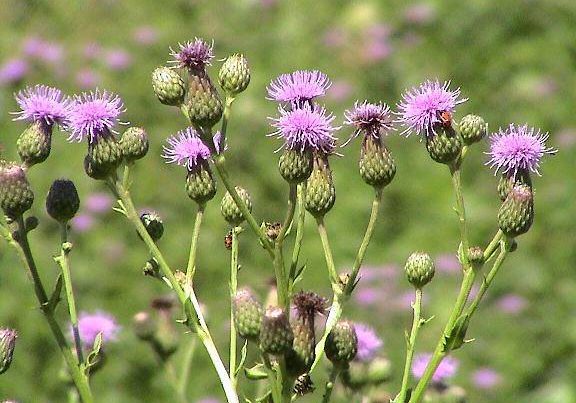Invasive Species
Prevention is the best and most effective means to control invasive species. New studies demonstrate that many landscape-wide efforts to control noxious weeds have resulted in secondary invasions by either the same or a different non-native species. Understanding why species can become invasive is key. We have studied invasive plant populations across the state and monitored a number of populations since the early 2000s. We conduct field surveys, design and implement monitoring studies, develop best management practices, conservation strategies, and noxious weed management plans. We can assist with site assessments and produce detailed maps with locations of non-native plants and Colorado State Listed Noxious weeds. In addition to our work with invasive plant species, CNHP also has expertise with native animals affected by invasive species.
Featured Topics

Noxious Weed Inventory, Mapping and Monitoring
Many of Colorado’s native landscapes have been altered by the arrival of plants from other regions of the globe. Maps of invasive plants and long-term monitoring are critical for effective management and protection of native communities. CNHP conducts surveys to inventory, map and monitor noxious weeds across Colorado.
Visit the Noxious Weed Inventory, Mapping and Monitoring Page
Invasive Species Strategic Planning
CNHP has developed several site specific strategies and management plans for the control of invasive plants.
Visit the Invasive Species Strategic Planning Page
Invasive Species Assessment Protocol
CNHP has employed this protocol developed by NatureServe to evaluate Colorado non-native plants for their impact on biodiversity. Each non-native species is assessed for its ecological impact, distribution, abundance, trends, and level of management difficulty to arrive at an Impact Rank, or I-rank (High, Medium, Low, or Insignificant).
Visit the Invasive Species Assessment Protocol Page
State of Colorado Noxious Weed Fact Sheets
The State of Colorado's Noxious Weed Program aims to control noxious weeds. State-listed noxious weed lists and fact sheets complete with photographs, illustrations, habitat descriptions, and maps can be downloaded from their website.
Visit the State of Colorado Noxious Weed Fact Sheets Page
Best Management Practices
CNHP has developed recommended Best Management Practices to help reduce impacts to globally imperiled plants during oil and gas development, weed treatment, and road maintenance activities. The BMPS are applicable to other land uses as well.
Visit the Best Management Practices Page
White-nose Syndrome
CNHP is on the lookout for white nose syndrome, a deadly disease in North American bats caused by an introduced fungus.
Visit the White-nose Syndrome Page
Chytrid Fungus
One of the primary reasons for the decline of the Colorado Listed Endangered Boreal Toad is the chytrid fungus, a non-native zoosporic organism in the Kingdom Fungi.
Visit the Chytrid Fungus Page
Non-native Animals
CNHP is concerned about the impacts of many other non-native animals such as fish, amphibians, birds, and other organisms. We record the locations and associated issues with many of these taxa during field surveys, such as Countywide Surveys of Critical Biological Resources.
Visit the Non-native Animals Page



